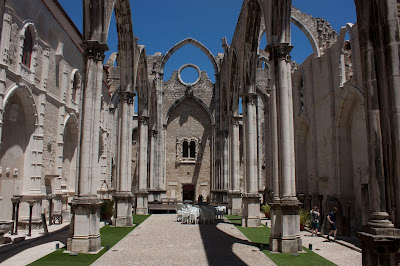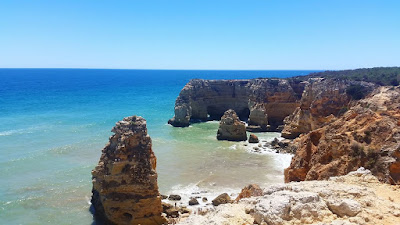France
Flying from Portugal to France led us to the next leg of our Europe adventure, meeting my brother on the way to add to our family travelling band! We were aiming to eventually end up in Greece, so France especially was a bit of a blur, with a few short stops along the way. A champagne tasting in Hautvillers (which I can't recommend enough!) This little village is known as the cradle of Champagne, as it was here that Dom Perignon perfected the bubbly drink in the 1600s!
We followed our gastronomical tour up with a mustard tasting in Dijon (a beautiful medieval town in its own right). Trying mustard flavored with truffles, lemon, blue cheese, and about everything else you can think of was great fun!
Chauvet Cave
My favourite stop however was the Chauvet cave. It is impossible to visit the original cave - for good reason, as the high number of visiting tourists within the cave leads to an increase in temperatures, causing mold, and irreversible deterioration to the precious cave paintings. Luckily, experts have spent years creating a perfect, beautiful replica of the cave, and honestly, you would never know you weren't in the original. To be able to experience it, exactly as it looks but without damaging the original, is to me, priceless. So in fact I should point out we visited Caverne du Pont-d'Arc (opened in 2015), the replica cave, a few km from the original. Having already visited the replica of Lascaux, which was also amazing, I think I would actually recommend Chauvet as my favourite, though they are in close competition!
Italy
Cornea
Our sole reason for this stop in Italy was for rum chocolate (It was worth it).
Lake Orta
The Lake region in Italy is just lovely, though horrifically busy with tourists (and rich tourists too!) we were unpleasantly surprised by how expensive campsites were, and by how much was booked up. Orta was my favourite of the three lake areas we visited, and the town was lovely. We enjoyed walking around and taking in the sights, as well as a delicious pasta dinner, which was cheesy and I ate far too much of, but well, when in Rome! And by Rome I mean Lake Orta. And by Lake Orta I mean Orta, because we weren't in the lake. Obviously. Moving on..
Lake Como and Lake Maggiore
We found these areas overpriced and overwhelmingly touristy, perhaps coming in September or May one might beat the crowds and get to enjoy the beautiful landscapes,but we felt overwhelmed by the tourism here.
One of the coolest things we did here however was to visit some of the islands in Lake Maggiore, and that was well worth the crowds! It's not cheap at 15 euro for the ferry ticket, but it does include all the islands.

Isola Madre and Isola Bella were our first two stops, and with a palace on the grounds, it's very impressive! The gardens were lovely to wander, and the white peacocks made it all the more ostentatious.

Our next stop was Isola superiore dei Pescatori, the fisherman's isle. It was also very touristy, but cute and worth a visit. Every restaurant looked like a tourist trap, so instead we bought homemade sandwiches, with ham and pecorino. The fillers were delicious, though the bread was quite possibly made by the giant in Jack the Beanstalk, and could have broken teeth.

We were planning to pop into Switzerland, but upon ringing ahead to campsites and finding out they were all charging about seventy euro a night, we decided it was madness and headed for fair Verona instead.
Verona
Verona has of course become famous due to Shakespeare's Romeo and Juliet. The locals cash in on this, with 'famous sites' such as Juliet's balcony, and Juliet's grave. These places throng with excitable tourists, and I was tempted to stand on a box and shout 'Juliet wasn't real!!' but thought I had better not dash their dreams.
Aside from that ridiculousness, (I don't even want to mention the sanitary pads that had love messages scrawled on them and then stuck to the walls of 'Juliet's house'), Verona was a pretty and very pleasant town to wander. With a lunch break of pizza and prosecco, what more could one ask for!?
Vicenza
A quick stop for a wander in this town is well worth it, as the architecture is something quite special. The Teatro Olimpico (Olympic Theatre) should also be checked out!




























